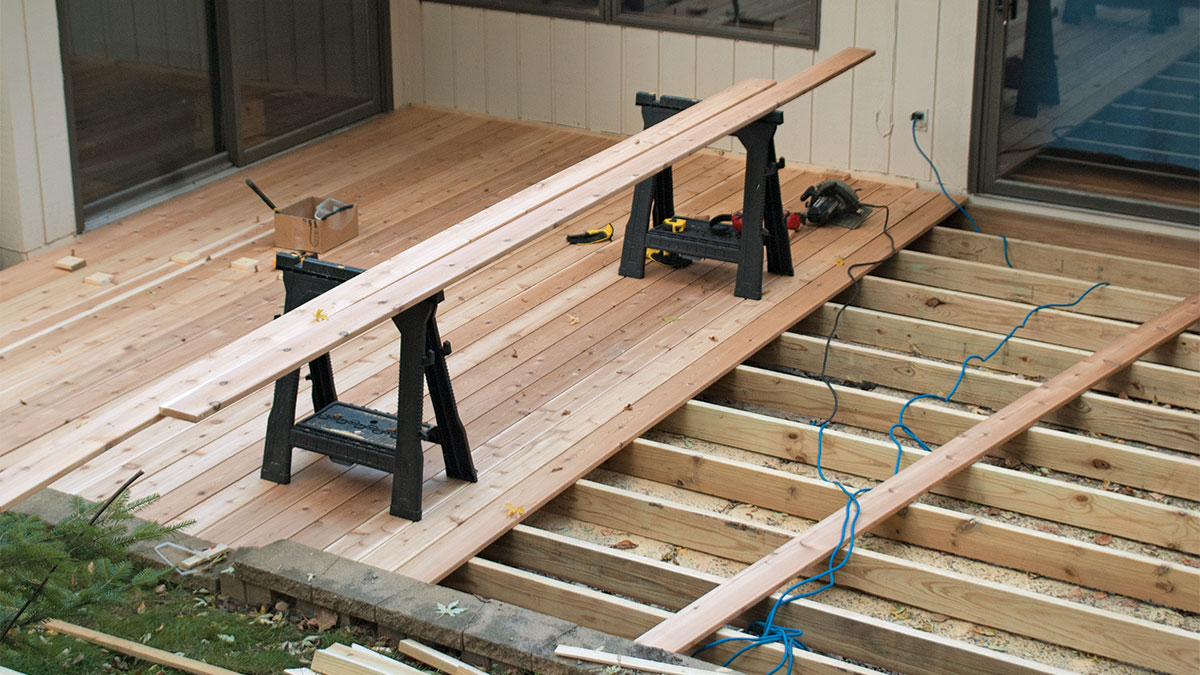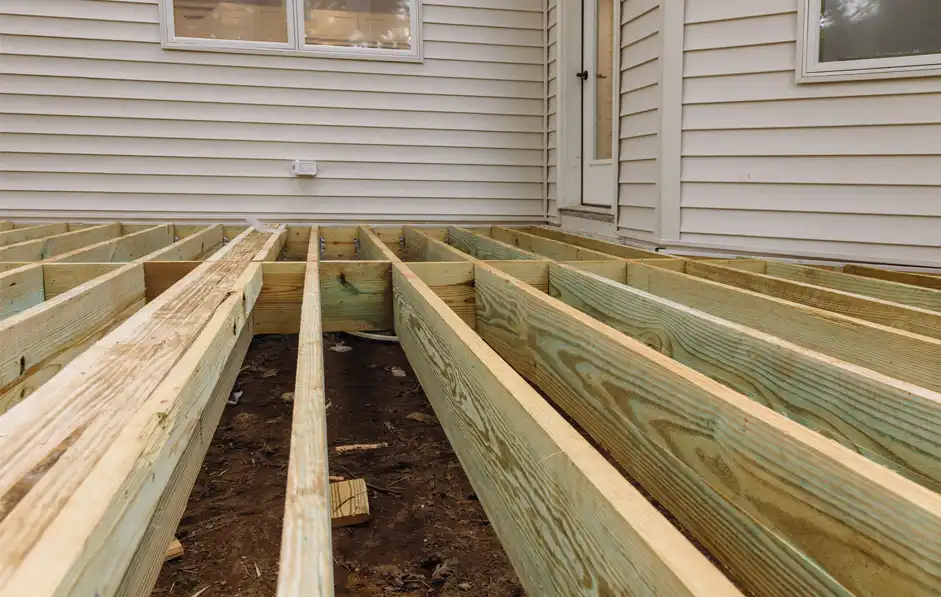Understand everything you need to know about deck installation Austin before starting your next project.
Understand everything you need to know about deck installation Austin before starting your next project.
Blog Article
Just how to Select the Right Materials for Your Deck Setup Project
Choosing the appropriate products for your deck setup task can appear daunting. There are various elements to take into consideration, from durability and maintenance to appearances and ecological influence. The choice between typical timber and composite materials, each with its own collection of advantages and downsides, can be particularly tough. The key is to stabilize your budget plan, design choices, and way of life requires to create a deck that will certainly enhance your exterior area for several years ahead.
Understanding the Various Types of Deck Materials
When getting started on a deck installation job, the choice of products becomes a critical choice. Numerous alternatives are offered, each with special attributes and aesthetic allure. Traditional timber, for instance, supplies a classic, all-natural look and is usually more cost-efficient. It can warp over time and calls for routine upkeep. Compound materials, on the other hand, are a blend of timber and plastic, giving toughness and resistance to weather elements. They demand much less upkeep contrasted to wood but are typically a lot more expensive. Another choice is vinyl, which is virtually maintenance-free and immune to insects and rot, albeit much less natural-looking. By recognizing these distinctions, house owners can make a more informed choice on one of the most suitable deck material for their particular requirements.
Examining the Sturdiness and Upkeep Demands of Deck Products
Examining the toughness and maintenance requirements of deck materials is an essential step in deck setup. Sturdiness entails the product's ability to hold up against severe weather, deterioration, and its durability. Cedar and redwood are normally resistant to rot and insects, making them sturdy selections. On the other hand, pressure-treated timber, while long lasting, might need more upkeep due to its sensitivity to cracking and buckling.
Comprehending upkeep needs is just as crucial. Some products need normal sealing or staining to maintain their look and resist moisture damages, while others, like composite outdoor decking, demand much less maintenance. By reviewing these elements, one can choose one of the most ideal outdoor decking product, ensuring a balance in between longevity, maintenance needs, and visual charm.
Price Evaluation: Contrasting Wood and Composite Decking
Although cost might at first appear like an additional worry, it is a considerable factor when comparing timber and composite outdoor decking. On the other hand, composite decking, while more expensive initially, calls for much less maintenance, potentially decreasing long-lasting expenses. Possible deck owners should consider their budget plan and determination to preserve their decks when making a decision between wood and composite decking.
Aesthetics and Design Adaptability of Decking Materials
Natural timber decking gives a traditional, classic look, while composite products use a broad range of colors and appearances to suit diverse tastes and styles. Composite materials, while less versatile in style, are still versatile enough for most deck styles. These variables, for that reason, are essential factors in the choice of decking product.
Ecological Influence of Decking Materials
When choosing outdoor decking products, one need to consider not just aesthetics and longevity, but likewise the ecological impact. It is essential to analyze the sustainability of materials and explore recycled decking options. Recognizing the potential effect on local communities will guarantee a more eco liable selection.
Assessing Product Sustainability
In the realm of deck building, examining material sustainability is an essential action. This includes examining the ecological influence of each potential material, thinking about elements such as the energy needed for its manufacturing, its carbon footprint, and its end-of-life disposal or reusing choices. Timber is an eco-friendly source, but unsustainable logging techniques can lead to deforestation. Composite decking materials typically incorporate wood and plastic, lowering the need for new hardwood however raising reliance on fossil gas. Light weight aluminum and various other steels may be more resilient and recyclable, however their extraction and handling can be energy-intensive. Therefore, the option of decking products must balance capability, appearances, expense, and sustainability to ensure an accountable and durable installment.
Recycled Decking Choices

Composite outdoor decking is particularly prominent due to its toughness and ease of upkeep. Recycled plastic outdoor decking, on the various other hand, is extremely resilient and needs marginal upkeep.

Effect on Local Environments
While the advantages of making use of recycled materials for outdoor decking can not be overemphasized, it's equally important to take into consideration the broader ecological implications of these choices. The removal, handling, and transportation of products can visit the website exceptionally affect neighborhood ecosystems. Logging for lumber outdoor decking adds to habitat loss and environment change. Even the manufacturing of composite products can release damaging exhausts. Conversely, making use of recycled or sustainably sourced products can help reduce these impacts. In addition, considering the life expectancy of products can minimize ecological influence; longer-lasting options require less regular substitute, hence preserving sources. Proper disposal of old decking is important to reducing land fill waste. Essentially, an eco-conscious deck task demands cautious material selection, lasting sourcing, and liable disposal.
Making Your Final Choice: Tips for Selecting the very best Deck Materials
As the write-up shifts right into the subtopic of "Making Your Final Choice: Tips for Selecting the most effective Deck Products", it is important to recognize the selection of deck products available. Striking an equilibrium between resilience and my sources visual appeal is essential in this option process. The adhering to conversation will certainly guide viewers in making an enlightened selection based on these vital considerations.
Comprehending Different Deck Materials
The job of selecting the best materials for your deck installment can seem intimidating due to the large variety of alternatives readily available. Vinyl or PVC decks are even a lot more resilient and call for much less upkeep than composite products, but they can look less all-natural. Aluminum decks are solid, light-weight, and resistant to rot, but they are also the most pricey choice.
Longevity vs. Aesthetic Appeals Balance
Stabilizing sturdiness with aesthetics can be a difficulty when picking deck materials - deck installation. High-traffic locations might necessitate long lasting products like composite decking, which withstands wear and tear but might do not have the all-natural elegance of timber. Property owners need to strike a balance, thinking about both the deck's useful needs and their visual preferences.
Verdict
In verdict, choosing the right materials for your deck installment project calls for careful factor to consider of factors such as resilience, maintenance, expense, appearances, and ecological effect. Whether you choose standard timber or composite products, your option needs to align with your budget plan, layout preferences, and way of living. Eventually, the finest outdoor decking material is one that boosts your outside space and provides enjoyment for years to come.
Report this page